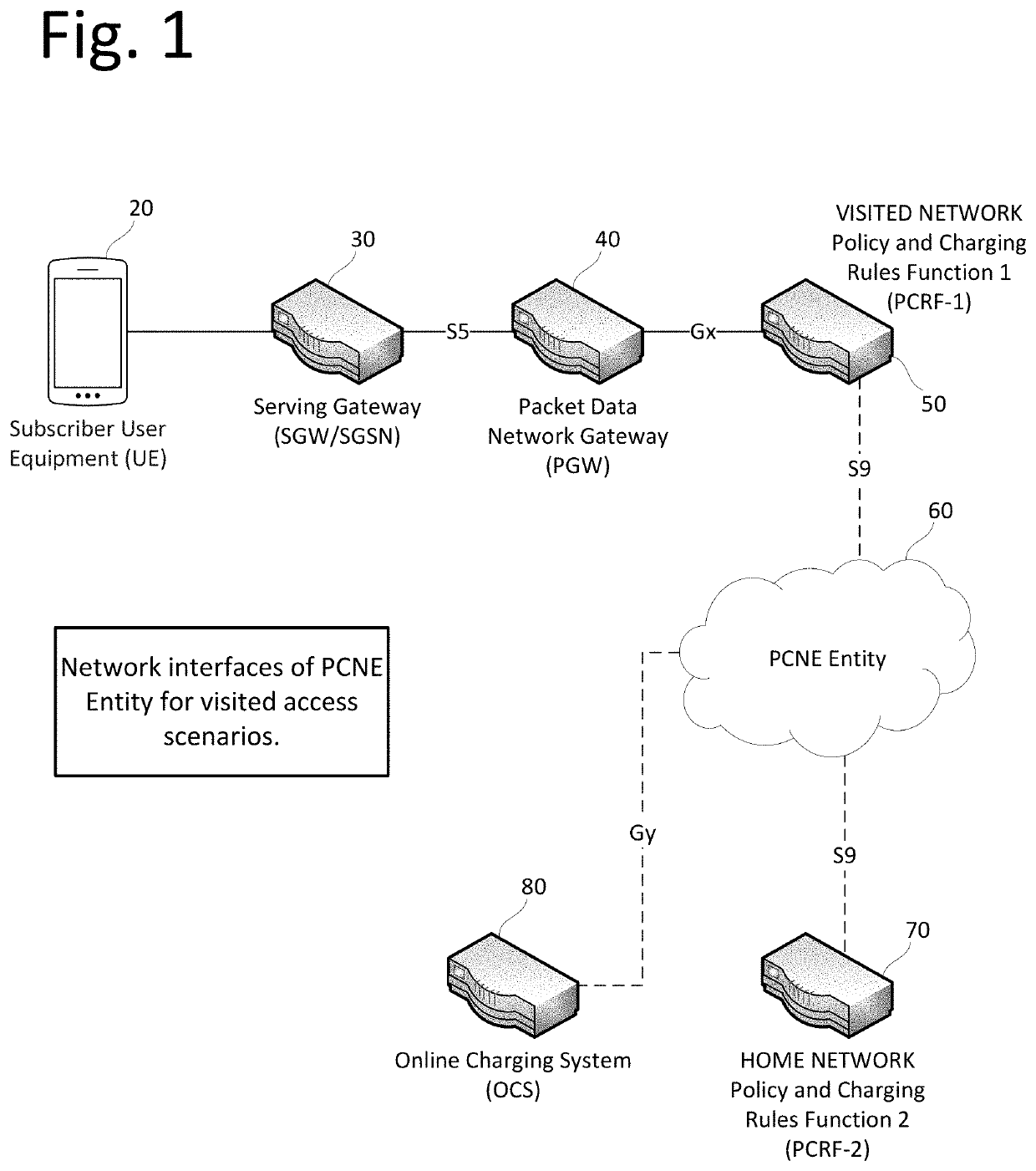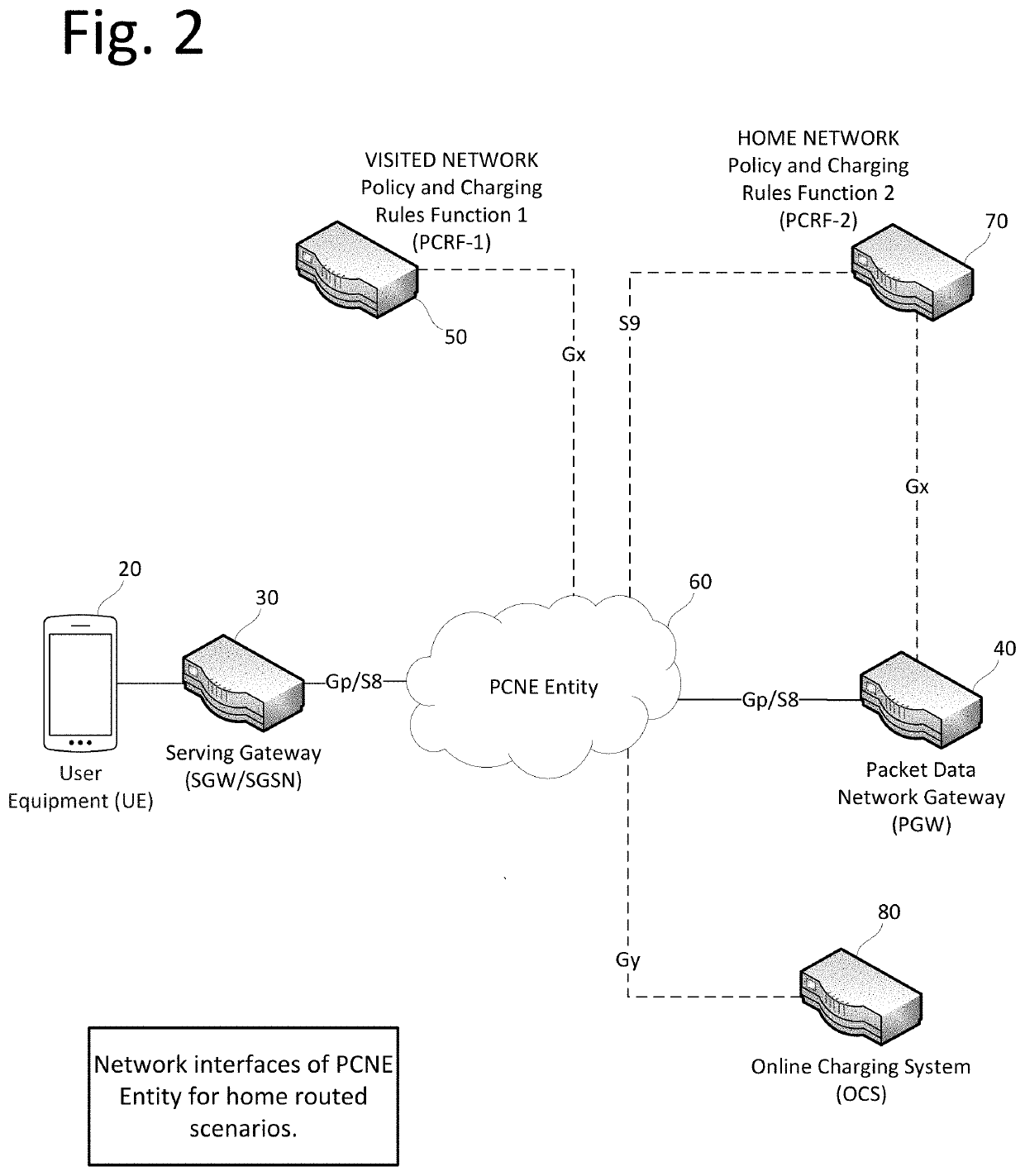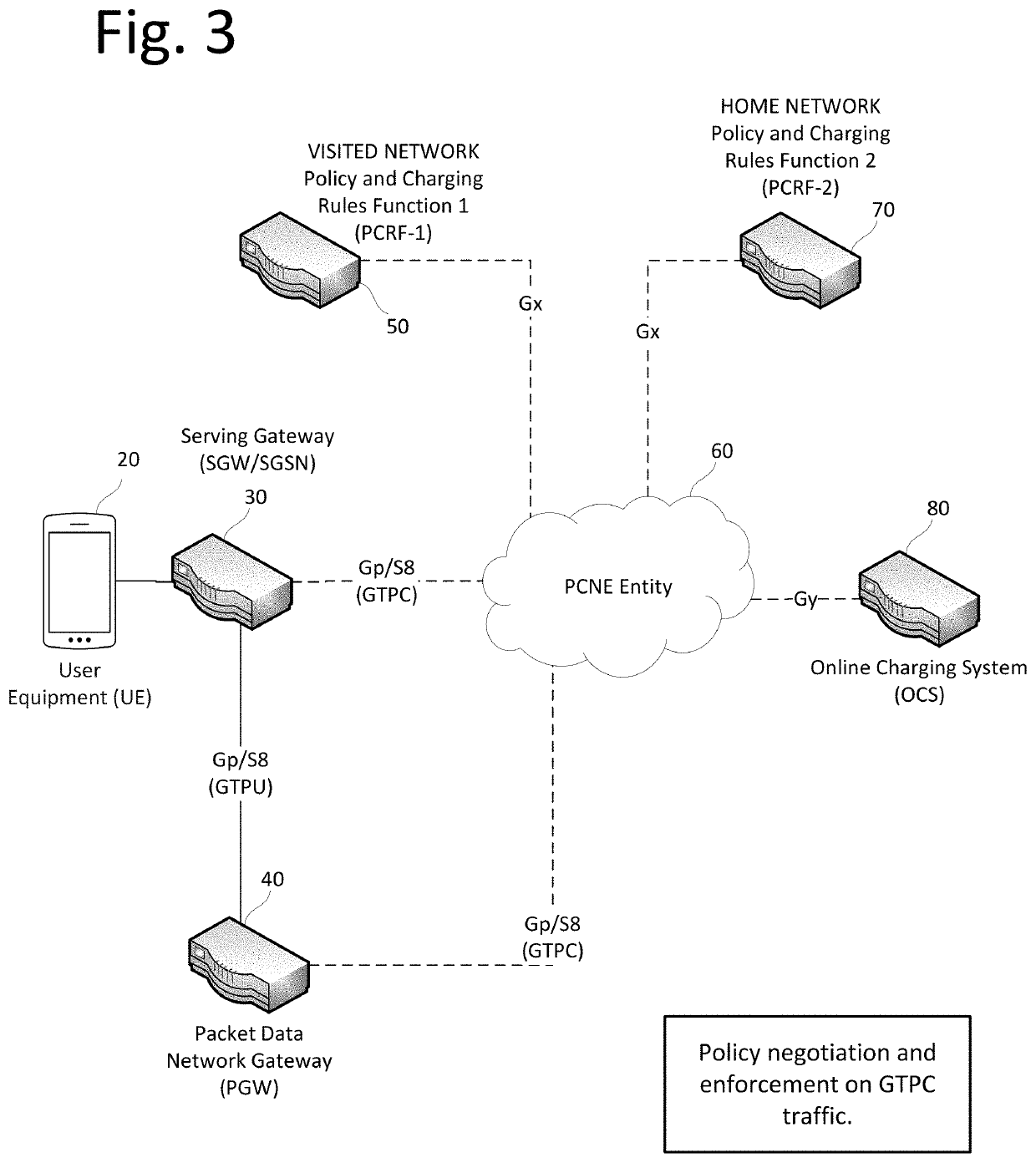Roaming cellular traffic policy and charging negotiation and enforcement entity
a roaming and cellular technology, applied in the field of telecommunications networks and internet protocol (ip) networks, can solve the problems of inconsistent subscriber experience, conflicting priorities, ineffective application of existing policy and charging systems, etc., to prevent overuse and enforce roaming agreements, optimize bandwidth and resources
- Summary
- Abstract
- Description
- Claims
- Application Information
AI Technical Summary
Benefits of technology
Problems solved by technology
Method used
Image
Examples
Embodiment Construction
[0023]This invention pertains to a method and system for negotiating and enforcing policy, charging, and proxy rules on the subscriber traffic via cloud hosted virtualized node called Policy and Charging Negotiation and Enforcement Entity (PCNE) on both signaling and user traffic in such a manner that the rules are compliant to policies of the operators involved in the call flow. For example, in a roaming scenario the method and system may be configured to provide seamless control to Visited as well as Home network operators. In some embodiments, the invention may be configured to perform the following functions: handling of inbound and outbound Roaming Traffic to provide joint control to Visited network and Home network by adhering to agreed roaming agreement policies in real-time. The disclosed method and system can also pertain to scenarios in which differential policies are needed to be implemented on subscriber traffic depending upon location, zone, profile and segment of subsc...
PUM
 Login to View More
Login to View More Abstract
Description
Claims
Application Information
 Login to View More
Login to View More - R&D
- Intellectual Property
- Life Sciences
- Materials
- Tech Scout
- Unparalleled Data Quality
- Higher Quality Content
- 60% Fewer Hallucinations
Browse by: Latest US Patents, China's latest patents, Technical Efficacy Thesaurus, Application Domain, Technology Topic, Popular Technical Reports.
© 2025 PatSnap. All rights reserved.Legal|Privacy policy|Modern Slavery Act Transparency Statement|Sitemap|About US| Contact US: help@patsnap.com



